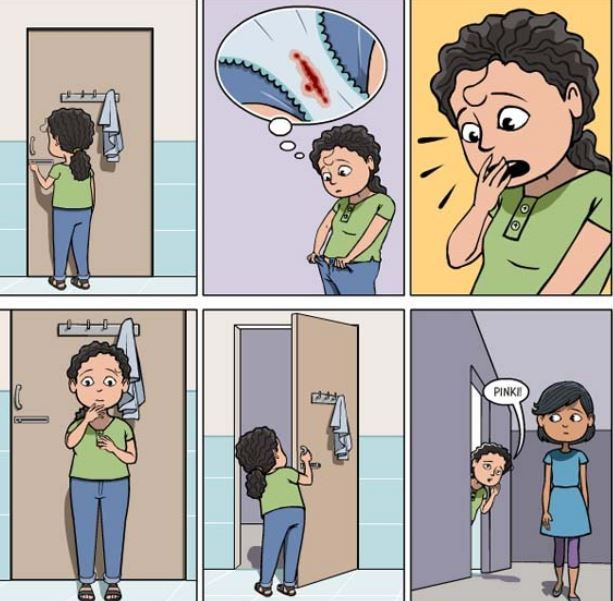Aditi Gupta's 'Menstrupedia,' Taboo-Busting Comic Book, Leaves Out Scary Menstruation Pics To Teach Indian Girls About Their Periods

Nearly two-thirds — 62 percent — of all Indian girls have no awareness of menstruation until they get their first period, Takepart reported. Due to ancient traditions, tens of millions of urban and rural girls in India are growing up with little or even no reliable information on their own physical development. Since 2010, a ground-breaking comic book and its companion informational website have been presenting girls with the information they need. Menstrupedia, the taboo-busting creation of Aditi Gupta, is a friendly guide to periods intended to help girls and women stay healthy and active during their periods and throughout their lives.
The word taboo comes from the Kingdom of Tonga, an archipelago of Polynesian islands, and was first introduced to the English language by Captain James Cook after his visit there in 1771. Despite such tropical origins, taboos are present in virtually all societies around the globe both past and present. A taboo is the social or religious custom of forbidding discussion of a practice considered either too sacred or too dangerous; the word may also describe a person, place, or activity to be avoided due to the dictates of custom. In India, menstruation is taboo. For several days a month, Indian females are considered “impure” — they are expected to wash their clothes and linens separately while menstruating and to avoid entering the kitchen and holy places. Far worse than these restrictions, many Indian mothers maintain a code of strict silence and do not inform their young daughters of the physical changes their bodies will naturally undergo.
This ends with me, you might imagine Gupta thinking four years ago when she took her first “small but definitive step to shatter the myths and misunderstandings surrounding menstruation.” Gupta, herself, had suffered through an anxiety-laden phase of her natural development. Forbidden to purchase products in public, as it might damage her family’s reputation, she used rags during her first years after puberty.
Gupta’s “small but definitive step,” then, was an English-language comic book designed with the help of her then-boyfriend and now husband, Tuhin Paul, a designer and an animator. Their collaboration, Menstrupedia, is an inventive and thorough — 90 pages long — comic book that provides curious kids with the information they want. Yet all of the necessary facts of life are neatly tucked within the compelling story of one girl’s physical maturation. Importantly, Paul has refrained from designing any overly-explicit illustrations that might cause trouble with an Indian girl’s family or, worse, make a girl uncomfortable with her own body.
Since the birth of Gupta’s brain child, the Menstrupedia comic book has traveled throughout India’s villages and cities, appearing within wealthy homes and slum dwellings, viewed, then, by those occupying the highest and lowest segments of an intricate and vast society. As of 2012, the comic moved online and today the Menstrupedia website gets about 100,000 visitors a month from 195 countries. According to Bangalore-based journalist Priti Salian, “the blog and the question-answer section feature some freewheeling discussions of puberty and menstruation of a kind that would have been unthinkable in India even a few years ago.”
Going forward, Gupta, now 29, plans to translate her comic book into Hindi and 15 other Indian languages while also introducing an e-book version. “It can be frightening to see blood coming from your vagina," Gupta told Reuters and further explained how cultural taboos have led to “numerous menstrual myths being created, which suggest that having your period is a disease or a curse — which leads girls and women to believe they are dirty and impure." Taking fear and misinformation out of the menstruation equation can only lead to a healthier society not only for girls and women but also for the men who will one day be their husbands and sons.



























